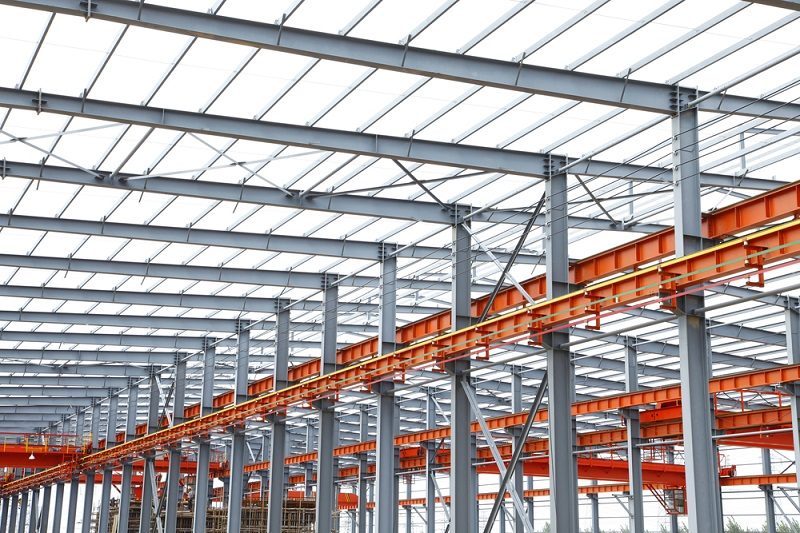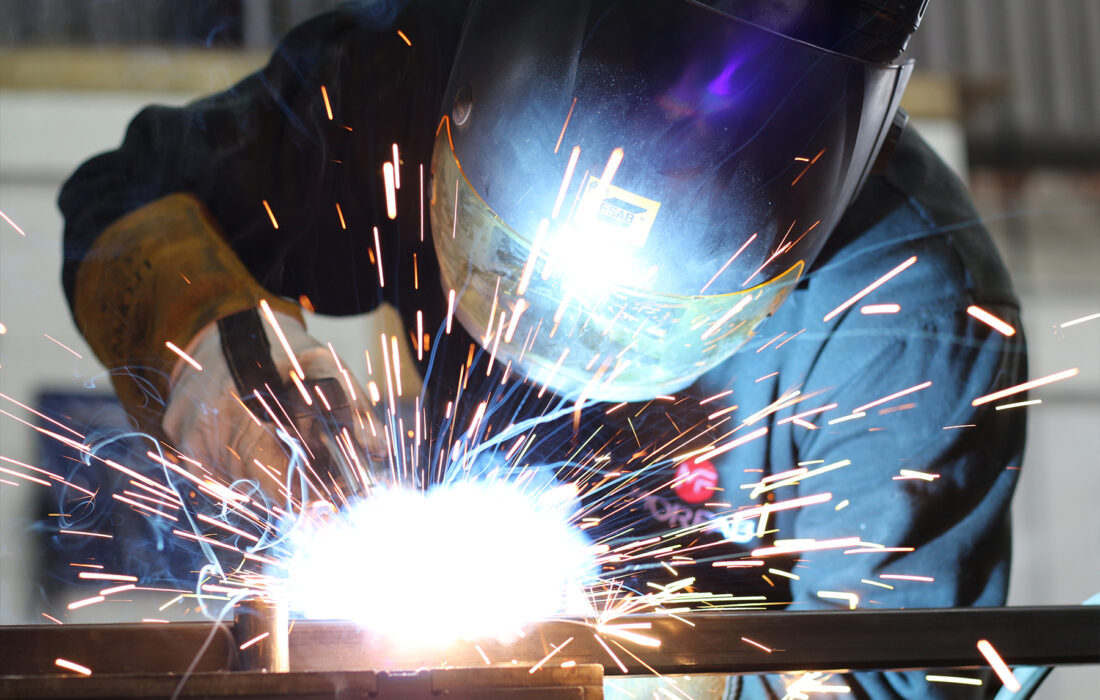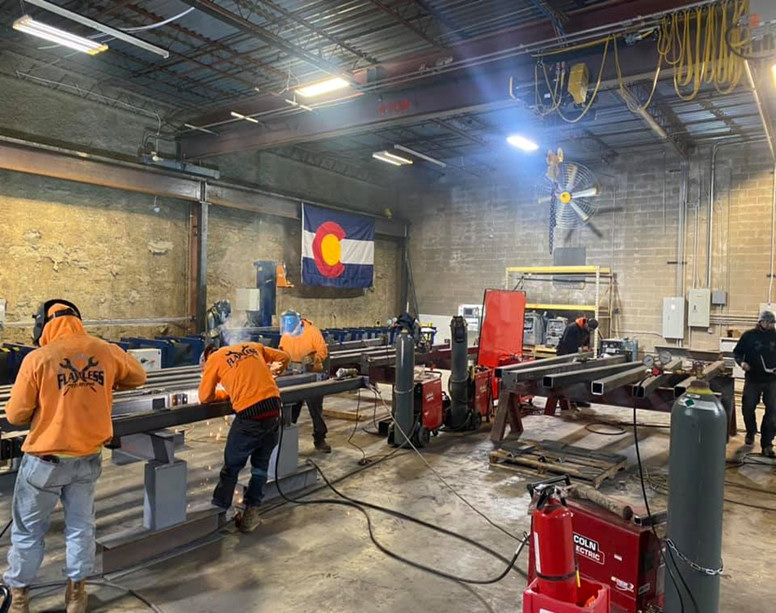Innovative Trends in Steel Construction: Enhancing Durability and Accuracy
In the realm of steel manufacture, the pursuit of sturdiness and accuracy has actually led to a wave of cutting-edge trends that are improving the sector. These fads are not just forming the existing but also laying the foundation for the future of steel fabrication, promising additional improvements in toughness and accuracy.
Advanced Welding Technologies
In the realm of steel construction, the fostering of advanced welding modern technologies has substantially changed the market's strategy to attaining remarkable high quality and precision in architectural welds. Advanced welding modern technologies, such as laser beam welding and rubbing mix welding, have actually become game-changers in the area. Laser light beam welding employs a focused laser light beam to sign up with metal elements with amazing precision and speed, making it suitable for thin products and detailed styles. On the various other hand, friction stir welding produces exceptionally solid bonds by mechanically intermixing the molecules of the materials at the joint, removing the need for thawing the metal. These innovations supply numerous benefits, including minimized heat-affected zones, minimal distortion, and boosted mechanical homes in the welded joints. By leveraging these advanced welding methods, steel producers can boost the durability, strength, and accuracy of their architectural welds, satisfying the significantly demanding requirements of contemporary construction tasks.
Robot Automation in Fabrication
Welcoming robot automation has become a cornerstone of modern-day steel fabrication methods, improving and streamlining procedures effectiveness throughout the industry. Robots are transforming the way steel elements are made, offering exceptional accuracy and speed while minimizing human mistake. These automated systems can take care of repetitive tasks with constant precision, resulting in better output.
One secret benefit of robot automation in steel construction is the capability to function all the time without tiredness, substantially enhancing production outcome. This continuous operation lessens downtime and increases task timelines, inevitably conserving expenses for producers. In addition, robotics can be configured to do intricate jobs that may be harmful or difficult for human employees, enhancing security in the workplace.
Moreover, robotic automation makes it possible for seamless integration with other digital technologies, such as computer-aided layout (CAD) software application and Net of Things (IoT) systems (metal fabrication melbourne). This interconnected technique enhances interaction between various phases of construction, optimizing process and making sure real-time surveillance and control. As the steel manufacture industry proceeds to progress, robot automation attracts attention as a transformative force driving performance and precision in manufacturing processes

High-Strength Alloy Development
The improvement of high-strength alloy growth in steel fabrication is reshaping the market's technique to improving material resilience and performance. High-strength alloys are crafted to display superior mechanical properties, such as increased tensile strength, durability, and rust resistance contrasted to standard steel qualities. By incorporating these advanced alloys right into manufacture procedures, producers can generate components that endure greater stress degrees and harsh environments, leading to even more resilient and trusted output.
One secret advantage of high-strength alloy development is the capability to reduce product thickness without compromising structural honesty. This not only causes lighter-weight elements however also contributes to cost financial savings and enhanced performance in construction and setting up procedures. The improved strength-to-weight ratio of these alloys permits for the layout and construction of structures with higher load-bearing capacities while minimizing total weight.
3D Modeling and Simulation Software Program
Improvements in steel fabrication processes have been significantly propelled by the assimilation of cutting-edge 3D modeling and simulation software devices. These devices permit fabricators to develop in-depth digital models of their projects, enabling them to imagine the final product with accuracy before any kind of manual labor starts. By simulating numerous tension aspects, environmental conditions, and architectural lots, makers can maximize layouts for boosted toughness and performance. In addition, 3D modeling and simulation software program simplify the production process by recognizing potential issues beforehand, lowering the demand for expensive rework and decreasing material waste.

Lasting Practices in Steel Production
Including sustainable practices right into steel production procedures is necessary for reducing ecological effect and making sure long-term resource schedule. One essential sustainable practice is the fostering of energy-efficient innovations to decrease greenhouse gas discharges throughout the steel manufacturing process. This consists of making use of renewable resource resources, such as solar or wind power, to power steel plants and executing energy-efficient tools to maximize power use.
One more vital facet of sustainable steel manufacturing is the accountable sourcing of raw materials. This entails ensuring that the iron ore and other resources used in steelmaking are obtained from ecologically pleasant and honest sources. By promoting transparency in the supply chain and adhering to stringent environmental requirements, steel producers can decrease the unfavorable impacts of source extraction on neighborhood communities and areas.

Conclusion
To conclude, the ingenious trends in steel fabrication such as advanced welding innovations, robot automation, high-strength alloy growth, 3D modeling and simulation software program, and lasting methods are enhancing the sturdiness and precision of steel items. These improvements are changing the steel construction sector by enhancing sustainability, effectiveness, and high quality. It is clear that the future of steel manufacture click to find out more exists in embracing these cutting-edge modern technologies to fulfill the demands of modern building and manufacturing sectors.
In the realm of steel manufacture, the quest of sturdiness and accuracy has actually led to a wave of innovative fads that are reshaping the sector.In the realm of steel fabrication, the adoption of sophisticated welding modern technologies has substantially changed the sector's strategy to achieving remarkable high quality and accuracy in architectural welds. As the steel fabrication industry proceeds to evolve, robotic automation stands out as a transformative pressure driving efficiency and precision in manufacturing procedures.
Moreover, recycling and reusing steel scrap and waste products play a significant role in enhancing the sustainability of steel manufacturing. steel fixing.In final thought, the ingenious fads in steel manufacture such as innovative welding see it here innovations, robot automation, high-strength alloy development, 3D modeling and simulation software program, and lasting techniques are boosting the resilience and precision of steel items